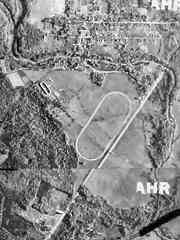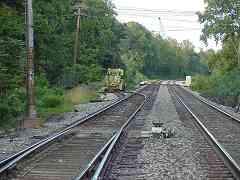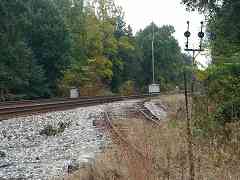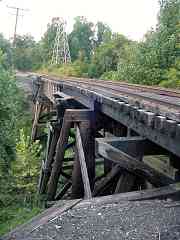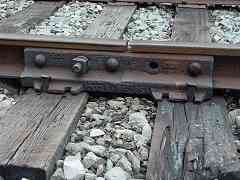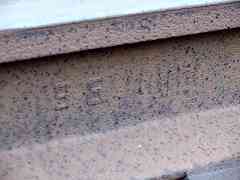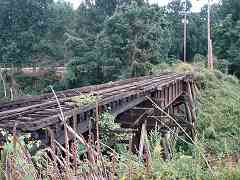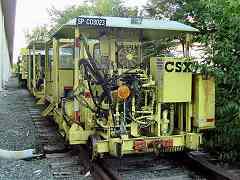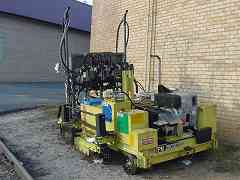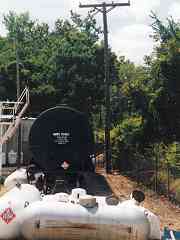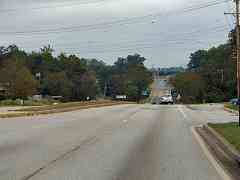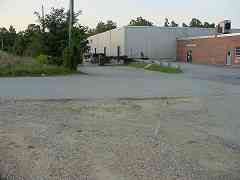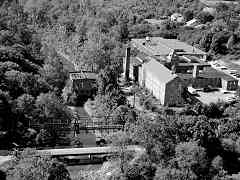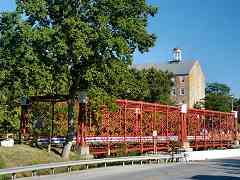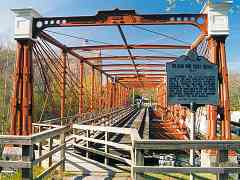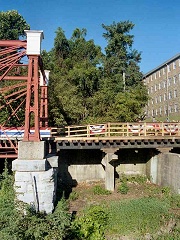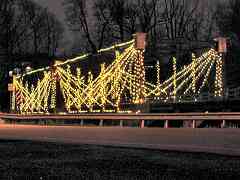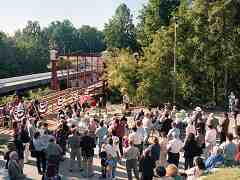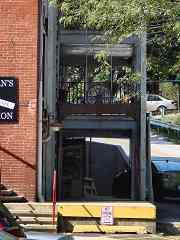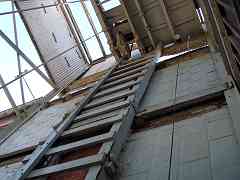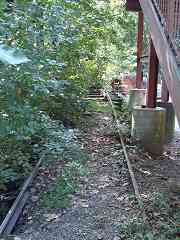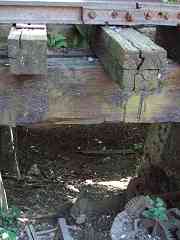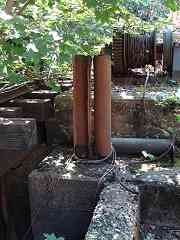|
Bins below the rails facilitated unloading of coal by gravity to the mill's
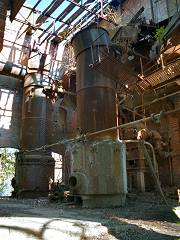
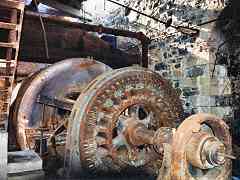 power plant. As manufacturing increased, water proved insufficient to
power the mill, so steam power was installed around 1880, which is likely
when this siding was added.
power plant. As manufacturing increased, water proved insufficient to
power the mill, so steam power was installed around 1880, which is likely
when this siding was added.
The power plant was located between these bins and the river. It first
generated steam and, later, electricity that was shared with, or probably
sold to, employees who lived in nearby homes owned by the mill company.
The photos at left and right were snapped in 1999 before disused power
plant remnants were removed. Savage Mill, indeed the whole Patuxent
Branch, is a time capsule of sorts.
|
